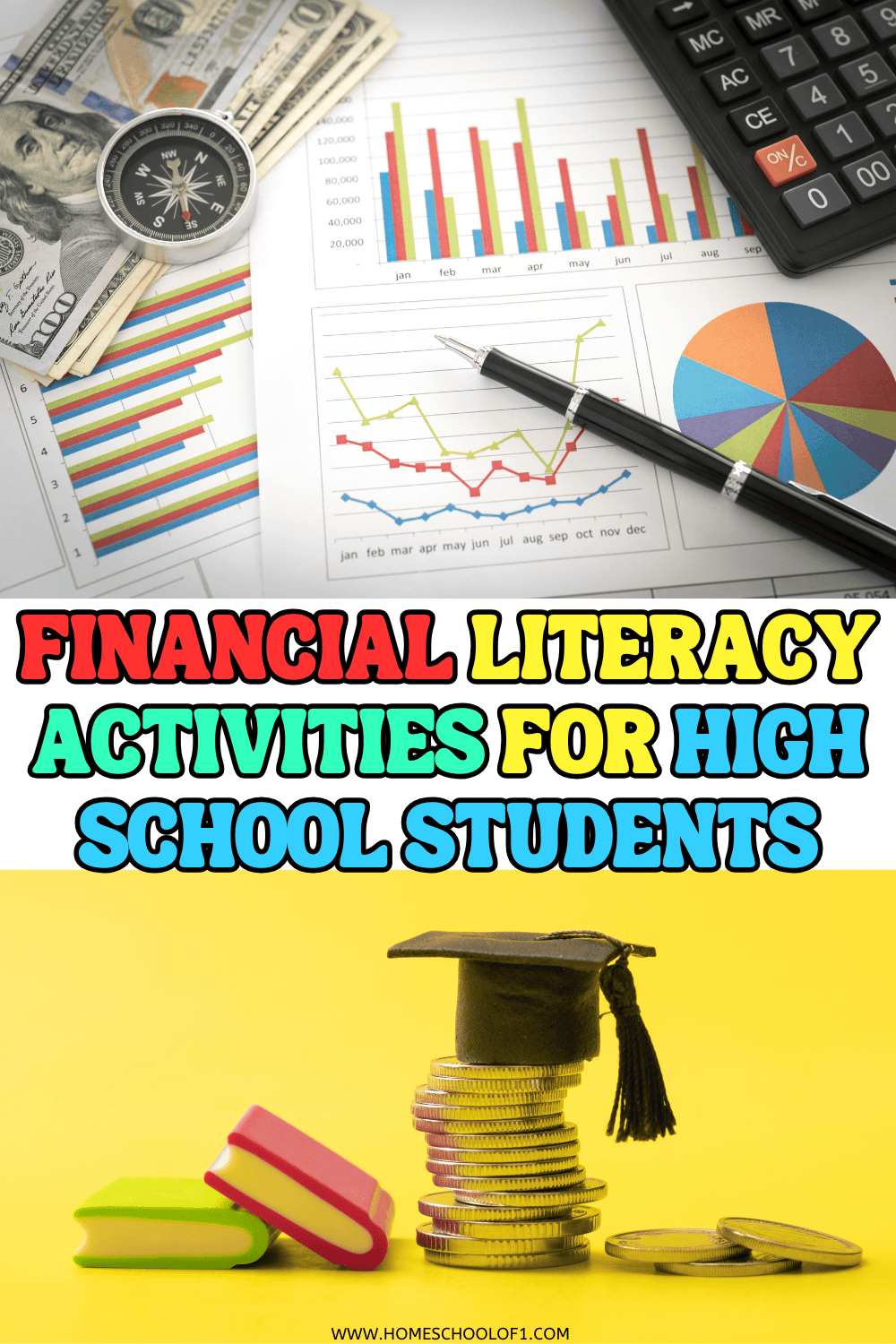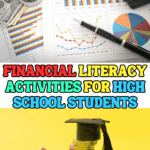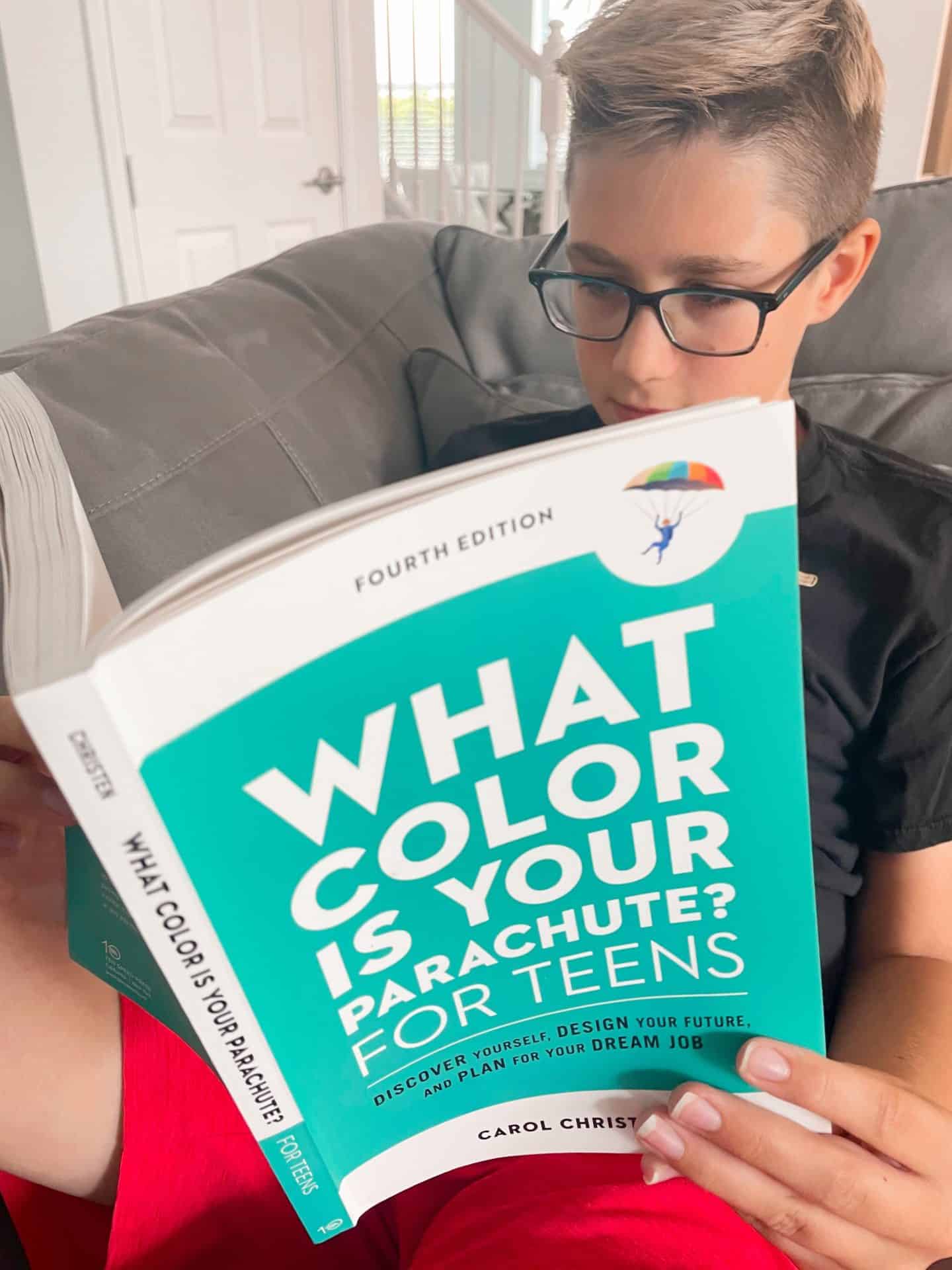Real-Life Financial Literacy Activities for High School Students
Financial literacy activities for high school students gave us a way to talk about money without turning it into a lecture.
When my son hit his teens, I realized how little real-world finance was being taught, things like budgeting, credit, and even how a paycheck works.
We started using games, simulations, and career research tools to help make sense of it all. Some stuck, others didn’t.
What worked best were the activities that felt practical, where he could make choices, solve problems, and see the impact. Whether you’re teaching in a classroom or at home, these financial literacy ideas can help teens build habits and confidence they’ll carry into adulthood.

**This post may contain affiliate links. As an Amazon Associate and a participant in other affiliate programs, I earn a commission on qualifying purchases.**
Financial Literacy Games for High School Students
Some of the best financial literacy breakthroughs we’ve had came through games, not textbooks or lectures. When my teen could see the consequences of his choices in a simulation or game, it clicked in a way nothing else did.
These games give high school students a chance to explore budgeting, credit, investing, and risk in a way that feels fun and low-pressure, but still meaningful. Whether you’re using them in a homeschool setting or a classroom, they help teens build real decision-making skills.
Free Games That Teach Teens Smart Money Skills
These games are all free and offer a creative way to introduce core financial concepts without making it feel like schoolwork:
- Financial literacy crossword puzzle – A simple printable that reinforces vocabulary, helpful for review or as a warm-up before deeper lessons.
- Misadventures in money management game – A choose-your-own-adventure game where students make decisions about loans, credit cards, and spending. My son was shocked at how easy it was to end up in debt here, great for sparking discussion.
- Shady Sam interactive game – This game walks students through shady lending practices from the perspective of the lender. It felt like a turning point in our lessons on credit, my teen understood how predatory loans work and why people fall for them.
- Lights Camera Budget – Teens act as movie producers balancing a tight budget. It’s a clever way to teach trade-offs and opportunity cost, especially for creative students.
- The Uber game – Simulates gig work and the realities of unstable income. We used this one when talking about part-time jobs and side hustles, it felt realistic and relevant.
Board Games That Make Financial Lessons Stick
When we wanted a screen-free way to keep the conversation going, these money board games were our go-to. They’re especially great for family game night or small group work:
- Rich Dad Cashflow game – Teaches long-term investing, passive income, and how to escape the rat race. It’s complex but worthwhile if your teen is already curious about wealth-building.
- What’s in the Bank? – A simpler option that introduces checking and saving basics. This one worked well for us early on when banking concepts were still new.
- Cover Your Assets – Fast-paced and fun, plus it introduces the concept of protecting your financial future. It quickly became a favorite in our house.
Credit and Debt Management Activities
Understanding how credit works felt like one of the trickiest parts of financial literacy in our house, mainly because it’s not something most teens experience firsthand. That’s why we used the Using Credit Wisely Unit Study to break it down in a way that actually made sense.
Through a mix of self-paced modules and classroom-style activities, teens learn more than just the definition of a credit score, they start to understand how everyday choices impact long-term financial health.
Some of the key takeaways include:
- The different types of credit (and when to use them responsibly)
- How to read a credit report and what those numbers actually mean
- Steps to build or improve a credit score from scratch
- How to avoid common debt traps like minimum payments and late fees
When we went through this, it sparked some great conversations about student loans, car payments, and even buy now/pay later options. The sooner teens understand how credit works, the better prepared they’ll be to manage money on their own.
Investing Simulations and Stock Market Challenges
Investing felt like one of those topics that was hard to explain until we tried it hands-on. How the Market Works ended up being one of the most helpful tools we used, it’s free, easy to set up, and surprisingly realistic for a stock market simulator.
My teen built a virtual portfolio, tracked real-time stock performance, and quickly saw how market swings affect investment decisions. What made it click was getting to pick companies he already knew, like Apple and Nike, and seeing how things like news headlines or quarterly earnings changed the value of his “investments.”
Along the way, he picked up basic terms like diversification, dividends, and risk tolerance, without even realizing he was learning them.
If you’re looking for a more structured challenge, try having students:
- Choose 3–5 familiar companies to “invest” in
- Track their portfolio over 4 weeks
- Reflect on why each stock gained or lost value
This type of activity builds confidence and financial decision-making skills in a way lectures just can’t match.
Saving and Compound Interest Activities
Compound interest was one of those lightbulb moments in our homeschool. Once my son saw how a small amount saved regularly could snowball into something big, it completely changed the way he thought about money.
We used The Power of Compound Interest lesson to play around with different savings scenarios. With a simple online calculator, he tested things like saving $50 a month starting now versus waiting 10 years to begin. Seeing the long-term difference, just from starting early, made the idea of “pay yourself first” feel real.
If you want to make it hands-on, try this:
- Have students plug in savings amounts ($25, $50, $100) into a compound interest calculator
- Compare how the total grows over 10, 20, and 30 years at 5%
- Talk about how interest compounds even when you stop adding money
This kind of visual, low-prep activity helps teens understand why saving early matters, without needing a background in math or finance. My son still refers to that chart when we talk about long-term goals.
Exploring Careers with Teenagers
Career exploration turned out to be one of the most eye-opening parts of our financial literacy lessons. My teen had big dreams, but once we started looking at real salaries, education costs, and the price of living in different cities, the connection between money and career choices started to make sense.
One of the most helpful activities we did was comparing:
- Starting vs. mid-career salaries in fields he was curious about
- College degrees vs. trade school or self-employment paths
- How far a salary actually goes in different places (we looked up apartments and groceries in New York vs. Atlanta)
Seeing the numbers laid out helped him think more practically about long-term goals, like whether student loans were worth it or what kind of income he’d need to live the lifestyle he wants.
We also used What Color is Your Parachute for Teens? to help narrow down interests and match them with real job paths. It’s less about telling teens what to do, and more about helping them connect their strengths to realistic career and financial outcomes.
Consumer Behavior Activities
This was the part of our financial literacy lessons that caught my teen off guard, in a good way. Once we started digging into how advertising, apps, and influencers shape our spending habits, it turned into one of our most engaging (and slightly eye-opening) units.
We used activities from Next Gen Personal Finance to look at things like:
- How online stores use “dark patterns” to push you into buying more
- How ads target emotions, especially on social media
- The difference between needs and wants, something that seems simple but isn’t always clear in the moment
One of our favorite challenges was analyzing a sponsored post on Instagram. My son broke down what made it persuasive, who it was targeting, and whether the product was actually useful. It was a great way to practice critical thinking, and it made him more aware of just how often we’re being sold something.
This kind of media literacy helps teens make smarter choices and recognize that financial decisions aren’t just about math. They’re influenced by emotion, habits, and what’s constantly being pushed at us online.
Banking and Financial Institution Activities
We realized pretty quickly that my teen knew what a debit card was, but not much about what happens behind the scenes. Learning how banks actually work helped fill in a lot of those everyday financial gaps.
We started with the Banking Basics card game, which walks students through common tasks like opening an account, making deposits, and avoiding fees. It gave him a clearer understanding of the difference between checking, savings, and investment accounts, and why each one matters.
To go deeper, we compared:
- Traditional banks vs. credit unions vs. online banks
- Monthly fees, ATM access, and interest rates on savings accounts
- What to look out for, like overdraft fees, inactivity fees, or limits on transfers
It turned into a real-world project when we looked at local banks and chose one that fit his needs. Giving teens this kind of hands-on decision-making helps them build confidence and avoid common money mistakes early.
Entrepreneurship Activities
This was hands down one of my teen’s favorite parts of our financial literacy lessons. He loved the idea of running his own business, even just on paper, and it gave him a chance to apply money skills in a creative, real-world way.
We walked through the basics of starting something small: picking a product, setting prices, estimating expenses, and figuring out how to make a profit. It didn’t need to be complicated, just something that made him think like an entrepreneur.
Some of the concepts we explored:
- Risk vs. reward – What happens if the business doesn’t take off?
- Profit margins – How much do you really make after costs?
- Marketing – What makes people notice and trust a product?
One of the most useful activities was creating a mini business plan. My son designed a mock online store, calculated startup costs, and even pitched the idea to us like Shark Tank. It turned into a fun way to teach budgeting, communication, and critical thinking, all in one.
Even if your teen doesn’t want to start a business, these lessons help them think more creatively about work, income, and financial independence.
More Financial Literacy Resources
Building strong money habits takes time, and sometimes the right resource can make all the difference, especially when your teen connects with how it’s taught. Here are a few extras we’ve used or explored that go beyond the basics:
- Financial literacy worksheets – Printable activities covering budgeting, saving, credit management, and investing.
- Career exploration for high school students worksheet – Helps teens connect their interests to future career paths and financial goals.
- Financial literacy for teens – A comprehensive program from Beyond Personal Finance.
- Moneytime review – An in-depth look at a popular financial education platform for young learners.
- Financial literacy for teenagers – Resources tailored for younger students building foundational financial skills.
- Financial literacy books for teens – Recommended reading to help teens grasp essential money concepts.
These activities offer everything your teens need to build lifelong financial skills. Whether you’re homeschooling or teaching in a classroom, these tools will set them up for success.
Last Updated on 10 July 2025 by Clare Brown



